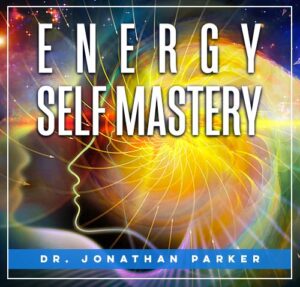How Energy Mindfulness Improves Productivity

Looking for more amazing products? Check out our online store and explore our collection here! Happy shopping!
Before diving in, please note: This post is for informational purposes only. If you’d like to know more about how we approach topics, feel free to check out our friendly Disclaimer Page.
Hey there, amazing readers! 
We’re committed to delivering quality posts, and your support (even just sticking around despite the ads) means everything to us. So, bear with us, and thanks for helping us keep the good vibes rolling. Now, on to the fun stuff!
TRANSLATE BUTTON AT THE END OF THE ARTICLE
A Quick Overview
In today’s fast-paced world, managing our energy levels can feel like a Herculean task.
We’re constantly bombarded with distractions, deadlines, and the need for productivity.
However, there’s a solution that’s gaining traction and making waves in workspaces everywhere—energy mindfulness.
This practice allows us to become aware of our energy levels, guiding us to work more efficiently and joyfully.
Let’s dive into how energy mindfulness can not only help us get through the day but also elevate our productivity to new heights.
Understanding Energy Mindfulness: A Quick Introduction
Energy mindfulness is about tuning into our physical and mental energy states.
It’s a way of cultivating awareness around how our energy fluctuates and affects our performance.
Think of it as a personal energy management system.
By recognizing when we feel drained or invigorated, we can adjust our tasks accordingly.
Imagine walking into an office, coffee in hand, and feeling a wave of alertness wash over you.
That’s a high-energy moment.
On the flip side, have you ever hit a mid-afternoon slump where you can barely keep your eyes open?
That’s a low-energy moment.
Energy mindfulness teaches us to honor these cycles.
Rather than forcing ourselves to push through fatigue, we can embrace our natural rhythms.
This practice is not just about being aware; it’s also about taking actionable steps to manage our energy.
It can involve techniques such as mindfulness meditation or simply taking a moment to breathe deeply before diving into a task.
The goal is to create a harmonious relationship with our energy, leading to better focus and productivity.
The Science Behind Energy and Productivity Connection
The connection between energy and productivity is well-documented.
Numerous studies show that our energy levels directly impact our cognitive functions, creativity, and efficiency.
According to research published in the Journal of Occupational Health Psychology, individuals who manage their energy levels experience higher job satisfaction and reduced stress.
Our brain requires a significant amount of energy to function optimally.
When we’re low on energy, our cognitive ability diminishes, leading to mistakes and decreased output.
Conversely, when we maintain higher energy levels, we are more likely to be creative problem solvers, effective communicators, and engaged team players.
Also, consider the concept of "flow." This state, where we feel fully immersed in our tasks, is heavily influenced by our energy levels.
The better we can manage our energy, the easier it is to achieve flow.
That’s when we’re truly at our best, producing high-quality work in less time.
In essence, being mindful of our energy isn’t just a feel-good practice; it’s backed by science.
Understanding this connection allows us to make informed choices about our workflows and habits.
Benefits of Practicing Energy Mindfulness Daily
Integrating energy mindfulness into our daily routines offers a treasure trove of benefits.
Master your Energy and Awaken Your Spirit – start your journey here.
Here are some of the standout perks:
Enhanced Focus: By recognizing when we are most alert, we can tackle high-concentration tasks at peak times.
Reduced Stress: Acknowledging our energy dips allows us to take breaks instead of pushing through, helping to stave off burnout.
Improved Decision-Making: When we’re energized, our cognitive functions are sharper, leading to better choices in our work.
Boosted Creativity: With higher energy levels, our brains can think outside the box and come up with innovative solutions.
Greater Satisfaction: When we’re in tune with our energy, we experience more joy in our tasks, leading to overall job satisfaction.
Stronger Collaboration: Understanding energy dynamics helps us communicate better with our teams, fostering a more collaborative environment.
Health Benefits: Energy mindfulness often promotes healthier lifestyle choices, such as better sleep, nutrition, and exercise habits.
Better Time Management: By aligning tasks with energy levels, we can accomplish more in less time.
Increased Resilience: Regular mindfulness practices build mental resilience, enabling us to handle challenges with grace.
Sustainable Productivity: Rather than burning out, energy mindfulness allows for sustainable approaches to work that can last throughout our careers.
When we embrace these benefits, we don’t just enhance our productivity; we also enrich our overall work experience.
Simple Techniques to Cultivate Energy Awareness
Taking the plunge into energy mindfulness doesn’t require a complete overhaul of your routine.
Here are some simple techniques to help you get started:
Keep an Energy Journal: Track your energy levels throughout the day.
Notice when you feel most productive and when you hit energy lows.
Set Intentions: At the start of each day, take a moment to set intentions around your energy.
What tasks align with your current energy level?
Practice Mindful Breathing: A few deep breaths can work wonders.
Try inhaling for a count of four, holding for four, and exhaling for six.
Repeat this a few times to center yourself.
Use the Pomodoro Technique: Work for 25 minutes, then take a 5-minute break.
This method not only boosts productivity but also aligns with natural energy cycles.
Movement Breaks: Incorporate short walks or stretches into your day.
Physical movement increases blood flow, which can enhance energy.
Limit Multitasking: Focus on one task at a time to maximize your energy and efficiency.
Multitasking often leads to energy drain.
Mindful Eating: Pay attention to what you eat.
Foods rich in nutrients provide sustained energy, whereas sugary snacks can lead to crashes.
Mindfulness Meditation: Even just a few minutes of meditation can help you tune into your energy and clear your mind.
Establish a Routine: A consistent daily routine helps regulate your energy levels, making it easier to anticipate when you’ll feel energized.
Reflect Weekly: At the end of each week, look back on your energy patterns.
What worked?
What didn’t?
Use this knowledge to adjust your strategies.
By incorporating these techniques, we can develop a deeper awareness of our energy and how it influences our daily lives.
How Energy Levels Impact Your Work Performance
It’s no secret that our energy levels affect our work performance.
High energy can lead to amazing productivity, while low energy often results in procrastination and mistakes.
But what does this look like in practice?
When I’m feeling energized, I can power through a project in record time.
My creativity flows, and I find myself coming up with ideas I didn’t even know I had.
On the other hand, when I’m dragging, I struggle to focus on the simplest tasks.
Emails pile up, and I get easily distracted.
Sound familiar?
Research shows that our cognitive performance peaks in cycles.
We can experience brief bursts of high energy followed by dips.
If we align our most challenging tasks with our peak energy times, we can maximize our efficiency.
Additionally, low energy levels can lead to a lack of motivation.
When I’m tired, I often feel like my work is a chore.
Yet, when I’m fresh and ready to go, I’m excited about my tasks.
Master your Energy and Awaken Your Spirit – start your journey here.
This enthusiasm translates into higher quality work and a willingness to go the extra mile.
Understanding how energy levels impact performance can transform our approach to work.
It encourages us to listen to our bodies and make choices that empower us.
Creating a Mindful Workspace for Better Focus
Our environment plays a crucial role in our energy levels.
A chaotic workspace can drain our energy, while a mindful, organized space can boost it.
Here are some tips to create a workspace that fosters focus and productivity:
Declutter: A tidy desk can lead to a clearer mind.
Take time to organize your space and remove items that distract you.
Personalize Your Space: Add elements that inspire you—photos, plants, or artwork.
It creates a more inviting atmosphere.
Lighting Matters: Natural light can do wonders for your energy; if possible, position your desk near a window.
Comfortable Seating: Ensure your chair and desk height support good posture.
Comfort can help maintain energy levels throughout the day.
Limit Noise: If your workspace is noisy, consider noise-canceling headphones or soft background music to minimize distractions.
Air Quality: Fresh air can invigorate your mind.
Open a window or use an air purifier to keep the air quality in check.
Incorporate Movement: Arrange your space to allow for easy movement.
Standing desks or yoga balls can help keep energy up.
Use Calming Colors: Soft, calming colors can create a serene atmosphere.
Think light blues or greens instead of harsh, bright colors.
Set Boundaries: Create a mental boundary between work and relaxation.
This helps to prevent burnout and keeps energy levels balanced.
Regularly Refresh Your Space: Change things up every once in a while.
A fresh layout can spark creativity and renew energy.
By optimizing our workspaces, we can create an environment that supports our energy mindfulness journey.
The Role of Breaks in Energy Management Strategies
Breaks are not just a luxury; they’re essential for maintaining energy levels.
Research shows that taking regular breaks can enhance productivity and creativity.
So, let’s talk about the role of breaks in energy management.
Have you ever experienced the dreaded “afternoon slump”?
It often hits after hours of continuous work.
Instead of grinding through it, a short break can revive our energy.
Stepping away from our screens and stretching our legs can work wonders.
I’ve found that even a 5-minute walk can clear my mind and boost my focus.
Different types of breaks serve different purposes:
Micro-breaks: Just a minute or two to stand, stretch, or take a few deep breaths can reset your energy.
Short breaks: 5 to 10-minute breaks allow for a quick reset.
Grab a drink of water or do a little dance—whatever lifts your spirits!
Long breaks: Lunch or longer breaks help us recharge more substantially.
Use this time to eat mindfully and enjoy some fresh air.
The key is to listen to our bodies.
If you’re starting to feel fatigued, it’s time for a break.
Making breaks a regular part of the day creates a rhythm that promotes energy management.
Energizing Activities to Recharge Your Mind and Body
Recharging our energy often requires intentional activities.
Here are some energizing activities that can help rejuvenate both mind and body:
Exercise: Physical activity releases endorphins, which can elevate your mood and energy levels.
Even a quick workout can make a difference.
Mindfulness Meditation: Taking a few moments to meditate centers your mind and relaxes your body.
Breathing Exercises: Simple breathing techniques can help reduce stress and boost energy in just a few minutes.
Nature Walks: Spending time in nature can invigorate our senses and improve our overall well-being.
Creative Outlets: Engaging in creative activities—like drawing, writing, or playing music—can recharge your mental energy.
Hydration: Drinking enough water is crucial for maintaining energy.
Dehydration can lead to fatigue.
Healthy Snacking: Choose snacks that provide sustained energy, like nuts, fruits, or yogurt.
Social Interaction: Connecting with others can boost your mood and energy.
A quick chat with a friend can work wonders.
Listening to Music: Upbeat music can energize us, making tasks feel lighter and more enjoyable.
Laughter: Don’t underestimate the power of laughter!
Watching a funny video or sharing jokes can lift your spirits.
Incorporating these activities into your daily routine can significantly enhance your energy levels and productivity.
Mindfulness Practices to Boost Team Collaboration
Energy mindfulness isn’t just beneficial on an individual level; it can enhance team dynamics as well.
Here’s how we can foster collaboration through mindfulness practices:
Mindful Meetings: Start team meetings with a minute of silence.
This allows everyone to center themselves and promotes focus.
Set Collective Intentions: At the beginning of a project, have the team set intentions around energy and collaboration.
This creates a shared commitment.
Encourage Breaks: Remind team members to take regular breaks.
When everyone is energized, teamwork flourishes.
Group Mindfulness Exercises: Introduce short mindfulness practices, like breathing exercises, during team gatherings.
This promotes a culture of care.
Celebrate Wins Together: Acknowledge not only individual achievements but also team victories.
Celebrating boosts morale and energy.
Foster Open Communication: Create a safe space for team members to express when they’re feeling drained or overwhelmed.
Collaborative Brainstorming: Encourage sessions where creative ideas can flow freely.
The energy of brainstorming together can spark innovation.
Share Energy Techniques: Share techniques that work for you.
Teams can learn from each other and adopt practices that enhance collective energy.
Utilize Mindful Tech: Use apps that encourage mindfulness and energy management to keep the team engaged.
Reflect Together: At the end of projects, gather to reflect on what worked in terms of energy management and collaboration.
Adapt and evolve together.
By promoting energy mindfulness within teams, we can cultivate an environment that enhances collaboration and productivity.
Real-Life Success Stories: Energy Mindfulness Wins
Many organizations are reaping the benefits of energy mindfulness.
For example, a tech company introduced a mindfulness program, encouraging employees to practice energy awareness.
As a result, they noticed a 25% increase in productivity and a significant drop in stress-related illnesses.
In another instance, a creative agency implemented regular movement breaks.
Team members reported feeling more energized and connected.
The agency thrived, landing more projects than ever.
I’ve also seen the impact of energy mindfulness firsthand.
At my own workplace, we began tracking our energy levels and intentionally scheduling demanding tasks during peak times.
The change was palpable.
Our team’s collaboration soared, and the quality of our work improved.
These success stories highlight how energy mindfulness can transform not only individual performance but also organizational culture.
It’s a win-win for everyone involved.
Challenges to Energy Mindfulness and How to Overcome Them
While the benefits of energy mindfulness are clear, implementing it can be challenging.
Here are some common obstacles and strategies to overcome them:
Resistance to Change: Many people are used to grinding through fatigue.
Education about the importance of energy mindfulness can help shift mindsets.
Time Constraints: Some may feel they don’t have time for mindfulness practices.
Start small—just a few minutes can make a difference.
Lack of Awareness: It can be difficult to recognize energy levels.
Encourage journaling or self-reflection to build awareness.
Workplace Culture: If a workplace doesn’t prioritize mindfulness, it can be tough to implement.
Start with personal practices and gradually share successes with others.
Burnout: When people are overwhelmed, mindfulness may feel out of reach.
Encourage breaks and self-care to combat burnout.
Distractions: In a busy environment, it’s easy to lose focus.
Create quiet zones or designated times for mindfulness activities.
Skepticism: Some may doubt the effectiveness of mindfulness.
Sharing research and personal stories can help persuade others.
Inconsistent Practice: It’s easy to fall off track.
Set reminders or find an accountability partner to stay committed.
Personal Preferences: Not all mindfulness techniques resonate with everyone.
Experiment with different practices to find what works best.
Overwhelm from Options: With so many mindfulness techniques available, it can be daunting to choose.
Start with one or two techniques and expand from there.
By addressing these challenges head-on, we can create a more supportive environment for energy mindfulness.
Join the Movement: Embrace Energy Mindfulness Today!
Energy mindfulness is more than just a trend; it’s a transformative practice that can improve our lives and work.
By tuning into our energy levels, we create a more productive, engaged, and joyful workplace.
Whether you’re an individual looking to enhance your focus or a team leader wanting to foster collaboration, energy mindfulness offers a path forward.
Start small, practice daily, and share your journey with others.
Let’s embrace energy mindfulness together, create a culture of awareness, and watch our productivity soar!
Conclusion
Energy mindfulness is a powerful tool that can significantly improve productivity and well-being.
By understanding our energy levels, implementing mindfulness techniques, and fostering mindful workspaces, we can cultivate an environment that supports both personal and collective growth.
As we navigate our daily tasks, let’s commit to being in tune with our energy and embracing the practices that uplift us.
The journey toward higher productivity and satisfaction is bright and full of possibilities.
So let’s jump in and ride the wave of energy mindfulness together!

The Enlightenment Journey is a remarkable collection of writings authored by a distinguished group of experts in the fields of spirituality, new age, and esoteric knowledge.
This anthology features a diverse assembly of well-experienced authors who bring their profound insights and credible perspectives to the forefront.
Each contributor possesses a wealth of knowledge and wisdom, making them authorities in their respective domains.
Together, they offer readers a transformative journey into the realms of spiritual growth, self-discovery, and esoteric enlightenment.
The Enlightenment Journey is a testament to the collective expertise of these luminaries, providing readers with a rich tapestry of ideas and information to illuminate their spiritual path.
Our Diverse Expertise
While our primary focus is on spirituality and esotericism, we are equally passionate about exploring a wide range of other topics and niches 

To ensure we provide the most accurate and valuable insights, we collaborate with trusted experts in their respective domains 
Our blog originally focused on spirituality and metaphysics, but we’ve since expanded to cover a wide range of niches. Don’t worry—we continue to publish a lot of articles on spirituality! Frequently visit our blog to explore our diverse content and stay tuned for more insightful reads.
Hey there, amazing reader! 
Check out our store here and take a peek at some of our featured products below! Thanks for being awesome!













